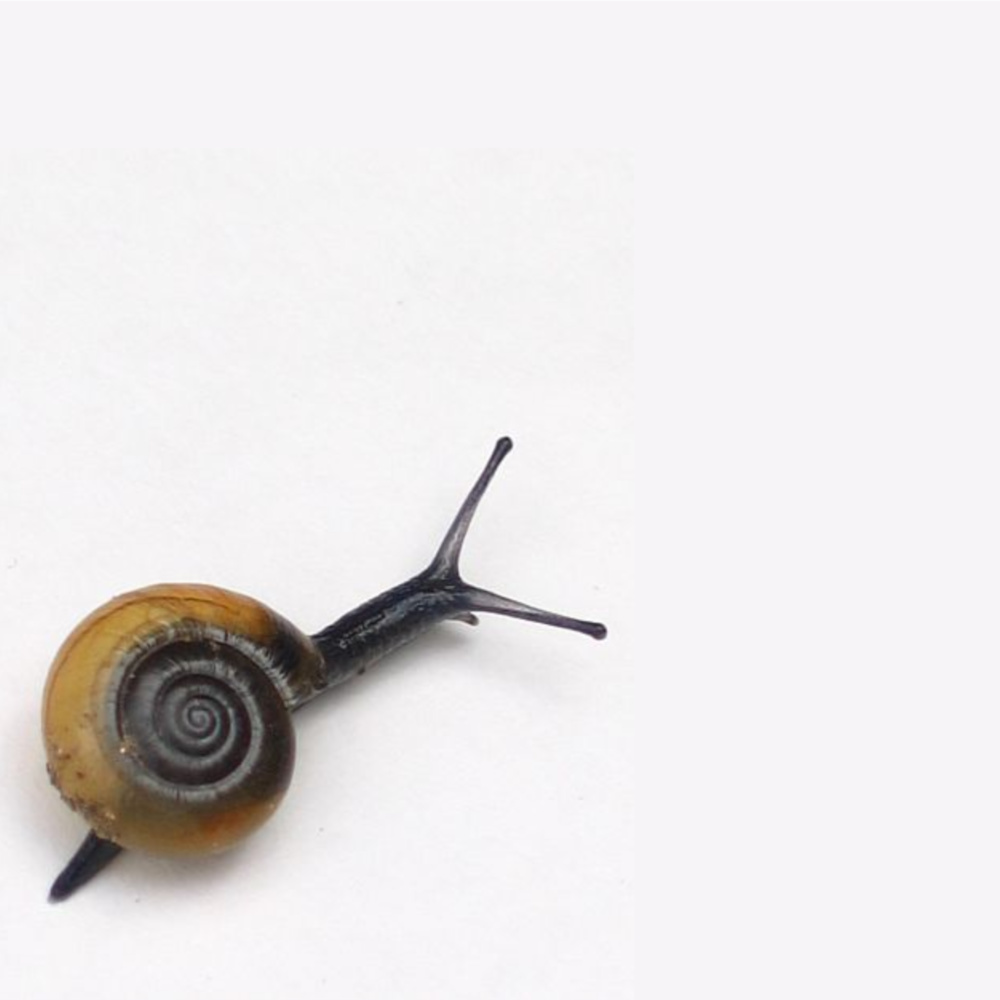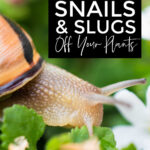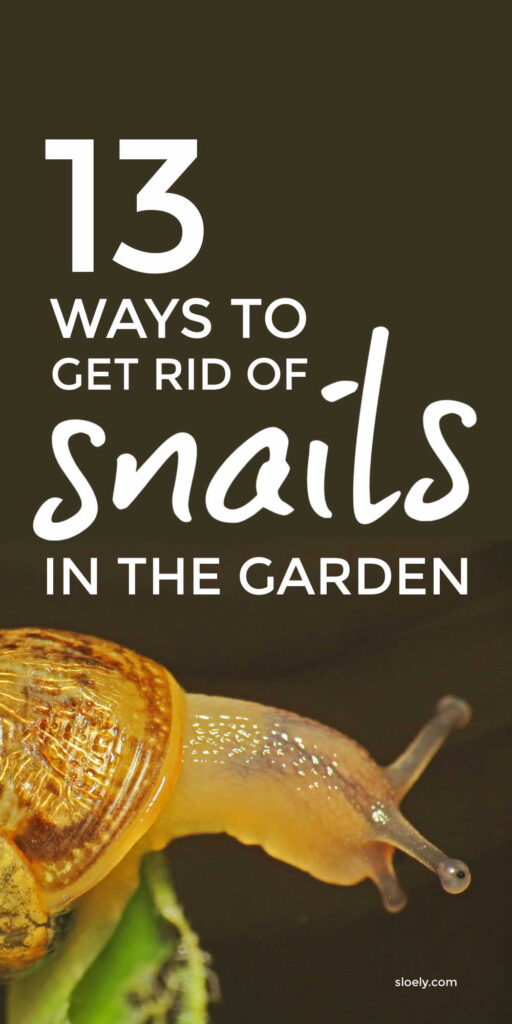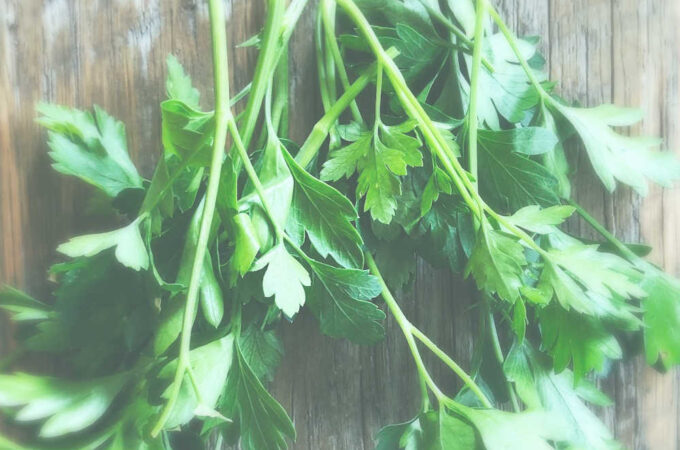
Slugs and snails in the garden are the bane of all gardeners, aren’t they? Especially, if like me you’re gardening somewhere with wet spring weather.
The slugs and snails seem to take a vicious delight in devouring young seedlings and plants just as they are getting going in our vegetable gardens and flower beds.
When I’ve carefully nurtured little pea and zucchini plants from seed and am getting all excited about future food from my garden, it’s really quite depressing to wake up to find them munched beyond rescue by evil slugs. And I could weep for the delphiniums I’ve lost over the years to the pests. Boo hoo!!
But luckily there are a whole bunch of easy and natural ways to get rid of slugs and snails from our gardens and to repel slugs and snails from all those delicate young spring plants, pretty flowers or prize hostas.
And the natural bit is important because many store bought pellets and baits to get rid of slugs and snails from our gardens are toxic for kids, pets and wildlife. And crazily for our soil!!
Toxic Slug & Snail Baits
Commercial products to get rid of slugs and snails from our gardens typically contain either:
- Metaldehyde which is known to be poisonous to both cats and dogs and young children or
- Ferric phosphate which is included in supposedly “organic” slug and snail baits. The ferric phosphate itself is not toxic but other chemicals used to activate the ferric phosphate in these products can poison essential wildlife such as birds, hedgehogs and toads who eat the slugs and snails plus critically the earth worms we depend upon for healthy soil.
So it makes sense to get rid of slugs and snails naturally and over the years from much trial and error I’ve discovered what I reckon are the most effective natural tips to repel both slugs and snails.
In the list below, I’ve included both my favourite natural tips for getting rid of slugs and snails plus also my experience with commonly shared tips, that I don’t actually think work very well. And finally a few “natural” slug and snail tips – you may come across – that I would totally avoid.
I do hope you find these natural tips helpful in getting rid of slugs and snails from your garden. Do save them for later and let me know how you get on.
And for more simple, natural gardening tips follow me on Pinterest.

Natural Tips To Get Rid Of Slugs & Snails
1. After Rain
I’ve learned – from too, too many lost plants in my garden – that the single best time to attack slugs and snails is after rain. Go out as the rain is stopping and you’ll find all those snails and slugs – who’ve been cunningly hiding – partying all over your garden or yard.
They’re easy picking. Dump them in a bucket – or get kids or grandkids to collect a penny a time – and then ditch them in the park or gently drown them in soapy water if you must. With 10 minutes or so effort – or for a few quids pocket money – you can easily get rid of hundreds of slugs and snails this way without harming any other bugs in the garden.
To protect early perennials in your flower beds, go out after the first slightly warmer showers of late winter and early spring. The snails will be waking from hibernation hungry and ready to devour any new shoots in sight.
2. Evening Patrol In Spring
My second best natural tip for getting rid of slugs and snails is to go out for a quick evening patrol in spring, when all your precious new vegetable seedlings and shoots are coming through.
It only takes 5 minutes. Just go out with a torch as it first gets dark and inspect containers and beds where you’ve got seedlings and young plants.
Again, any slugs and snails in the vicinity are easy pickings.
You can put them in a tub to take to the park or drown then in dish water. Or more viciously, go out – as one friend does – armed with scissors to snip them in half!! Though remember, slugs and snails are essential food for hedgehogs, frogs and toads and lots of birds whose own chick shells depend upon snail shell calcium for growth.
3. Beer Traps
My third most reliable natural way to repel slugs and snails from my vegetables and flowers are simple beer traps.
You can find all sorts of complicated tips for slug and snail repellent beer traps on Pinterest. You don’t need them. Just pour cheap beer in a few old jars and place them in key positions in your garden.
I put one amongst my plant pots and one at the bottom of my little green house. The slugs and snails can’t resist the brew and drown themselves in it!! All you have to do is extract the corpses. (Don’t leave them too long else they become truly – I assure you – disgusting.) Refresh the beer trap every week or so. It really is that simple.
4. Copper Rings
Copper rings are a bit of a faff to be honest. And they’re not cheap. But I do think it’s worth having a few to repel slugs and snails when you plant out larger fruiting vegetables like zucchini or courgettes.
They are especially effective combined with some of the other slug and snail repellents below, e.g. coffee grounds, gravel and egg shells.
5. Copper Tape
I have to confess I have not had much success with copper tape but some gardening friends swear by it and it’s a cheaper and easier to option than copper rings. The trick apparently is not to see it as a silver bullet but use it in combination with other natural slug and snail repellents below.
You simply put the copper tape in a ring around the top of your seedling pots or trays to repel the slugs and snails.
6. Coffee Grounds
There are all sorts of fab ways to reuse coffee grounds in the garden from growing mushrooms to feeding the compost. And you can also use them to repel slugs and snails from your vegetables and flowers.
Put the coffee grounds in the bottom of seedling trays or as borders around key plants you’re trying to protect. The slugs and snails supposedly don’t like the grittiness or the smell but again they’re not a silver bullet. I combine them with ground egg shells and rosemary (see below) for more impact.
7. Diatomaceous Earth
Diatomaceous earth is a really useful non-toxic, natural way to get rid of garden pests – and pests indoors – if you’re trying to garden organically.
I absolutely swear by it for keeping ants out of the house and some people swear by it in the garden to get rid of slugs and snails but I do think it depends where you’re gardening.
A ring of diatomaceous earth around plants will certainly repel slugs and snails but – and for fellow Brits it’s a big but – it only works if its dry. If the chalky white earth gets wet from watering or rain – more than a tad likely – the slugs and snails will happily slide over it to eat your vegetables.
8. Gravel
Slugs and snails obviously love sliming their way to your plants so rough surfaces can help to keep them away. They don’t like the fine edges of gravel so you can put it at the bottom of seedling trays and as a perimeter around plants to repel the slugs and snails.
But again the gravel is a less effective slug and snail repellent once wet so I would combine it with coffee grounds and some of the following tips in seedling trays. It can also be more trouble than its worth in your vegetable garden itself as it can just end up worked into the soil.
9. Egg Shells
There are all sorts ways to use eggshells in the garden including naturally repelling slugs and snails from your plant. They can help but … yep, you’ve guessed it … they are not a silver bullet. On their own, they will not – from what I’ve seen – keep slugs and snails off your prize plants.
But I do think they can be a helpful extra barrier in the greenhouse, if you mix them up with coffee grounds and rosemary or pine needles, (see below).
10. Rosemary
Rosemary is a wonderfully useful herb to grow in the garden. It’s obviously, great in cooking but is also a natural antibiotic and can be used to repel pests naturally including horrid clothes moths and the neighbours cats.
And luckily, slugs and snails don’t like it the smell or the roughness of the needles. So plant some in pots in strategic parts of the garden and add needles to your coffee and egg shell mix in seedling trays, plant pot saucers and around the greenhouse.
11. Pine Needles
If you can’t get hold of rosemary easily then use pine needles instead your slug and snail repellent egg shell and coffee mix.
12. Chicken Wire
My final natural tip for repelling slugs and snails from plants is fine chicken wire. I’ve tried it around pots and as a sheet under trays and pots that supposedly the slugs and snails wouldn’t like sliming over but had no luck … they still happily slimed their way to my pea shoots.
The only way it has helped is as a cover over large pots and containers with young plants in them. It does need to be very fine and the tiny little fellas – who can do some damage – can still get in but it will keep big slugs and snails in particular off prize plants until they’re of a size to be less tasty.
13. Salt
You may have found suggestions to use salt in the garden to poison and repel snails and slugs. Don’t even think about it!!! Salt will do more damage to your soil and plants than to the slugs and snails.
So there you go, a whole bunch of natural ways to get rid of snails and slugs from your garden and repel them from specific vegetable plants and flowers. I do think tips one to three are the most effective but its worth adding in some of the others to provide extra natural barriers and defence.
I do hope these tips help. For more natural gardening tips try these:
- Organic Gardening For Beginners
- Organic Weed Control
- Get Rid Of Flies Naturally
- Get Rid of Ants Naturally




















Getrude zvaitwa Mazvimavi says
Thanks for the garden tips .I also had snails eating my garden Capetown Winter they are so active these snails hence went and picked up really big ones last night .I am going to put them in the nearby park today.
The eggshells coffee and rosemary will try then from tomorrow.
Thanks for Tips
Ana says
thank you for the information I will try.
Ana says
always use coffee and eggshells in the vegies but some people think that the coffee is acidic and is no to good for the soil.
Javky Shugak says
Sizzors and a torch, snip snip! We go snail and slug hunting! A pail of salty water, disposed of outside the garden area. Forget beer traps, just use water sugar and yeast, this you CAN dispose of in the garden, for the birds or in your compst pile.